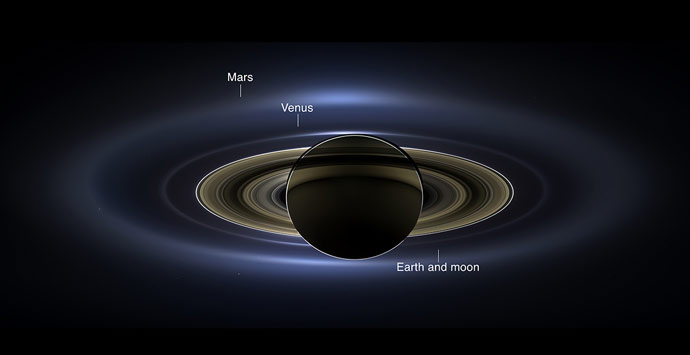NASA has released a natural color image of Saturn from space, the first in which Saturn, its moons and rings, and Earth, Venus and Mars, all are visible.
The new panoramic mosaic of the majestic Saturn system taken by NASA’s Cassini spacecraft, which shows the view as it would be seen by human eyes, was unveiled at the Newseum in Washington on Tuesday.
Cassini’s imaging team processed 141 wide-angle images to create the panorama. The image sweeps 404,880 miles (651,591 kilometers) across Saturn and its inner ring system, including all of Saturn’s rings out to the E ring, which is Saturn’s second outermost ring. For perspective, the distance between Earth and our moon would fit comfortably inside the span of the E ring.
‘In this one magnificent view, Cassini has delivered to us a universe of marvels,’ said Carolyn Porco, Cassini’s imaging team lead at the Space Science Institute in Boulder, Colo. ‘And it did so on a day people all over the world, in unison, smiled in celebration at the sheer joy of being alive on a pale blue dot.’
The mosaic is part of Cassini’s ‘Wave at Saturn’ campaign, where on July 19, people for the first time had advance notice a spacecraft was taking their picture from planetary distances. NASA invited the public to celebrate by finding Saturn in their part of the sky, waving at the ringed planet and sharing pictures over the Internet.

With both Cassini’s wide-angle and narrow-angle cameras aimed at Saturn, Cassini was able to capture 323 images in just over four hours. This final mosaic uses 141 of those wide-angle images. Images taken using the red, green and blue spectral filters of the wide-angle camera were combined and mosaicked together to create this natural-color view. Image credit: NASA/JPL-Caltech/Space Science Institute.